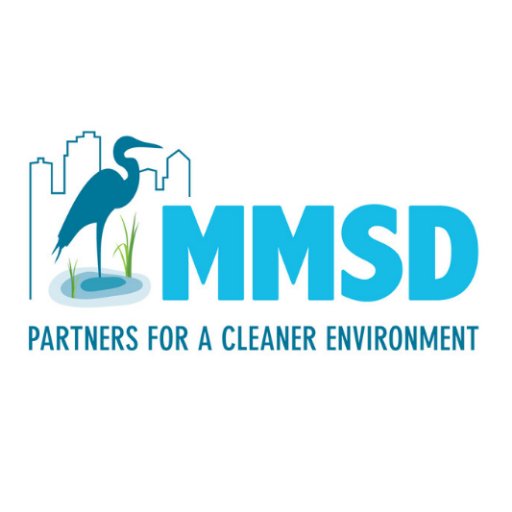Storm Ready Preparations for 2020 as Heavy Rain Possible for Third Year in a Row
(Milwaukee, WI) – More than $80 million will be invested this year in wastewater treatment and flood management projects for the Milwaukee Metropolitan Sewerage District (MMSD), part of a six-year plan that totals $1.5 billion (including debt service).
The District set two records in 2019, capturing and treating the most stormwater and wastewater in a single year dating back to 1994, the first full year of Deep Tunnel operation.
| GALLONS CLEANED
@ TREATMENT PLANTS (HIGHEST ANNUAL TOTALS SINCE 1994) |
GALLONS CAPTURED
BY DEEP TUNNEL (HIGHEST ANNUAL CAPTURE SINCE 1994) |
| 2019 85.6 Billion | 2019 8.3 Billion |
| 1995 81.1 Billion | 2018 7.8 Billion |
| 1998 80.9 Billion | 1999 7.6 Billion |
| 1999 80.4 Billion | 2001 7.3 Billion |
“Really wet years cause a lot of wear and tear on equipment and infrastructure, higher energy bills and additional expenses for chemicals used in wastewater treatment,” said West Allis Mayor Dan Devine, MMSD’s Commission Chair. “We have to spend more money just to pump treated water out of our reclamation facilities into Lake Michigan because the lake levels are at a record high.”
The National Weather Service measured the third wettest year on record in Milwaukee in 2019, nearly a foot (11.26 inches) above normal.
| YEAR | PRECIPITATION |
| 1876 | 50.36” |
| 1877 | 46.15” |
| 2019 | 46.02” |
| 2018 | 45.08” |
| 2008 | 44.44” |
MMSD captured and cleaned 99.3% of all the water and wastewater that entered the regional sewer system in 2019. The goal nationally is to reach 85%. To reduce the risk of basement backups, the District did have two combined sewer overflows in 2019 that totaled 563 million gallons.
2020 Capital Investments
The District’s treatment plants will get significant attention this year with $50 million budgeted for improvements and to replace aging equipment. Asset management is key for making sure MMSD’s water reclamation facilities can operate at maximum capacity when needed, reducing the risk of sewer overflows and basement backups.
The microscopic organisms, “bugs”, used in wastewater treatment require constant management to maintain high quality effluent and maximum capacity at the plants. MMSD turns the bugs into Milorganite®, a fertilizer made in Milwaukee since 1926. A buildup of bugs in the reclamation facilities can end up reducing treatment capacity. In 2020, the District is investing $13 million for improvements and equipment replacement in the Milorganite® production process.
In addition, work is underway to rehabilitate a nearly 12-mile-long pipeline that runs between the Jones Island and South Shore Water Reclamation Facilities. It is critical infrastructure that allows MMSD to transfer bugs and biosolids between plants for energy production in an anaerobic digester at South Shore and Milorganite® production at Jones Island. Ultimately, both activities increase the ability to operate at maximum capacity at the plants.
$13 million is dedicated for work on MMSD’s 300 miles of regional sewers.
Flood management projects will receive $17 million this year with work on the Menomonee and Kinnickinnic Rivers.
NOTE: This press release was submitted to Urban Milwaukee and was not written by an Urban Milwaukee writer. While it is believed to be reliable, Urban Milwaukee does not guarantee its accuracy or completeness.






















